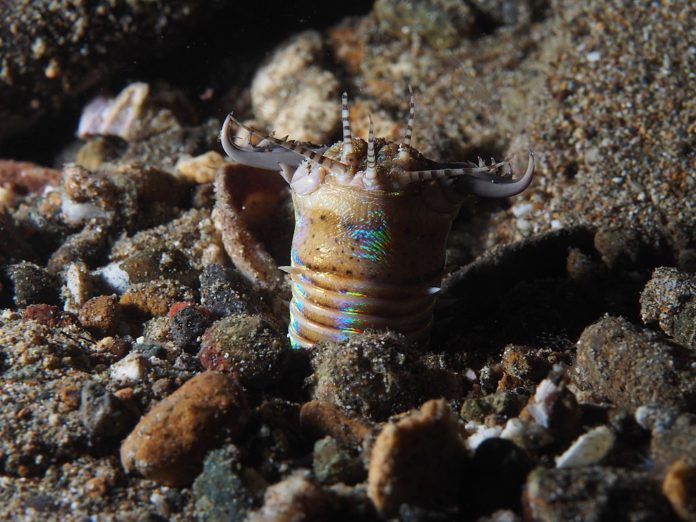Giant, ambush-predatory sand worms sound like something straight out of a science fiction novel. But it turns out that these metres-long predators are very real — and thanks to a trace fossil found in coastal Taiwan, we now know a bit more about the monster burrows they call home.
An analysis of the fossils was led by Yu-Yen Pan, a PhD student in Simon Fraser University’s Department of Earth Sciences, and published in Scientific Reports.
Today, the ocean floor is home to a predatory species known as the Bobbit worm that can reach up to three metres in length. With only a small portion of their bodies typically visible above the ocean floor, Bobbit worms may initially appear unassuming — yet in reality, they’re anything but.
“They hide in their burrows until they explode upwards, grabbing unsuspecting prey with a snap of their powerful jaws,” Pan and colleagues described in their paper. “The still living prey are then pulled into the sediment for consumption.”
Similar species have existed since the early Paleozoic era. However, scientists today know relatively little about these fearsome predators’ burrows, their behaviour beneath the ocean floor, or their evolutionary history. Their bodies are composed of soft tissues that rapidly decay after their deaths, meaning that the fossil record for these species is incomplete.
What’s more, modern-day Bobbit worms typically only extend a small portion of their body above the sand, and the uppermost regions of their burrows often collapse inwards when the worms retreat. This means that the burrows of living Bobbit worms are also difficult to study.
Thanks to the team’s discovery of a trace fossil of one of these burrows, however, scientists are beginning to piece together how ancient Bobbit worms may have lived and fed beneath the ocean floor. The fossil was preserved in a rocky coastal area in Taiwan, and measured two metres in length.
Trace fossils are details like burrows, tracks, or feces that are preserved in rocks and present indirect evidence of life. While the soft tissues of the ancient Bobbit worm inside the burrow would have decayed over time, its remains kept the burrow intact long enough for the shape of the burrow to be preserved within the rock.
“I was fascinated by this monster burrow at first glance,” Pan said in a press release. “The distinctive, feather-like structures around the upper burrow were […] unique and no previously studied trace fossil has shown similar features.”
The team went on to find a total of 319 similar burrow specimens preserved in the 20-million-year-old sedimentary rock in the surrounding area.
They realized that the unique structure of these burrows shared similarities with what scientists believe modern-day Bobbit worm burrows must look like. For example, the feather-like structures they observed could be evidence of the upper regions of the burrow collapsing in on itself — a characteristic observed in modern-day Bobbit worm burrows.
Going forwards, these trace fossils will help scientists understand how Bobbit worms live and feed, as well as how they’ve evolved over time. While modern-day sand burrows are prone to collapse, the preserved ancient burrows can help shed light on just what exactly is going on beneath the ocean floor.
To learn more about the discovery, watch the video press release from Simon Fraser University:









































